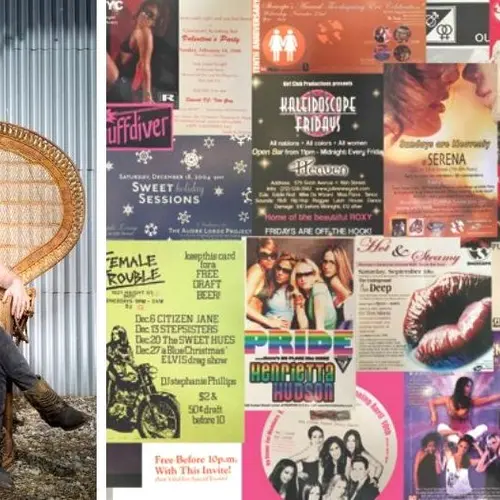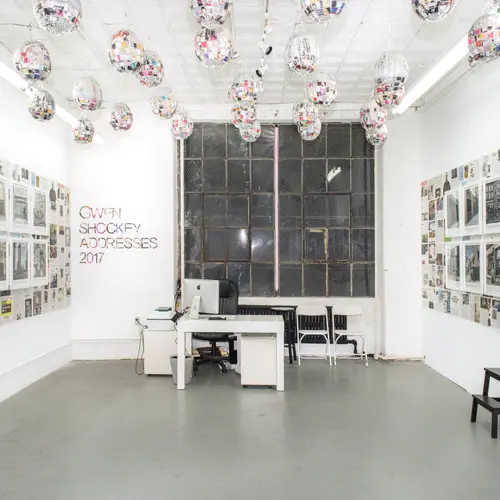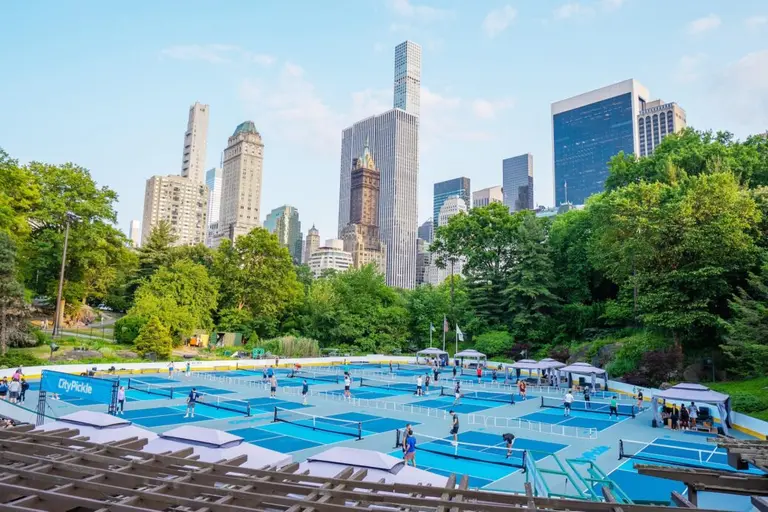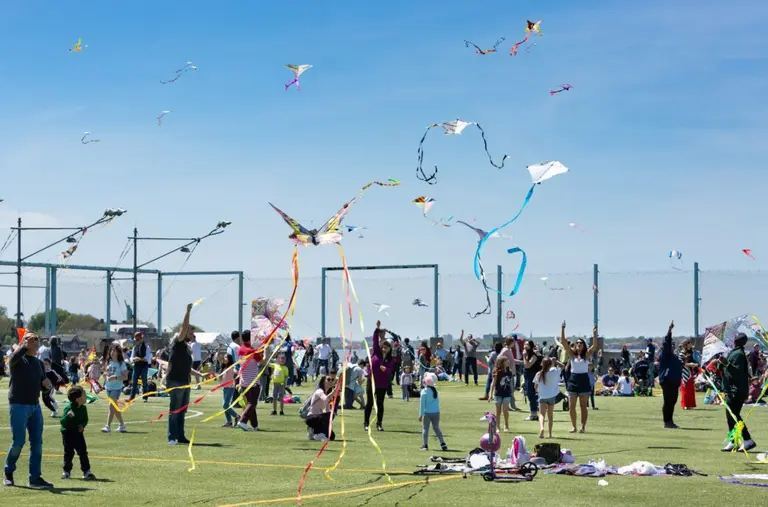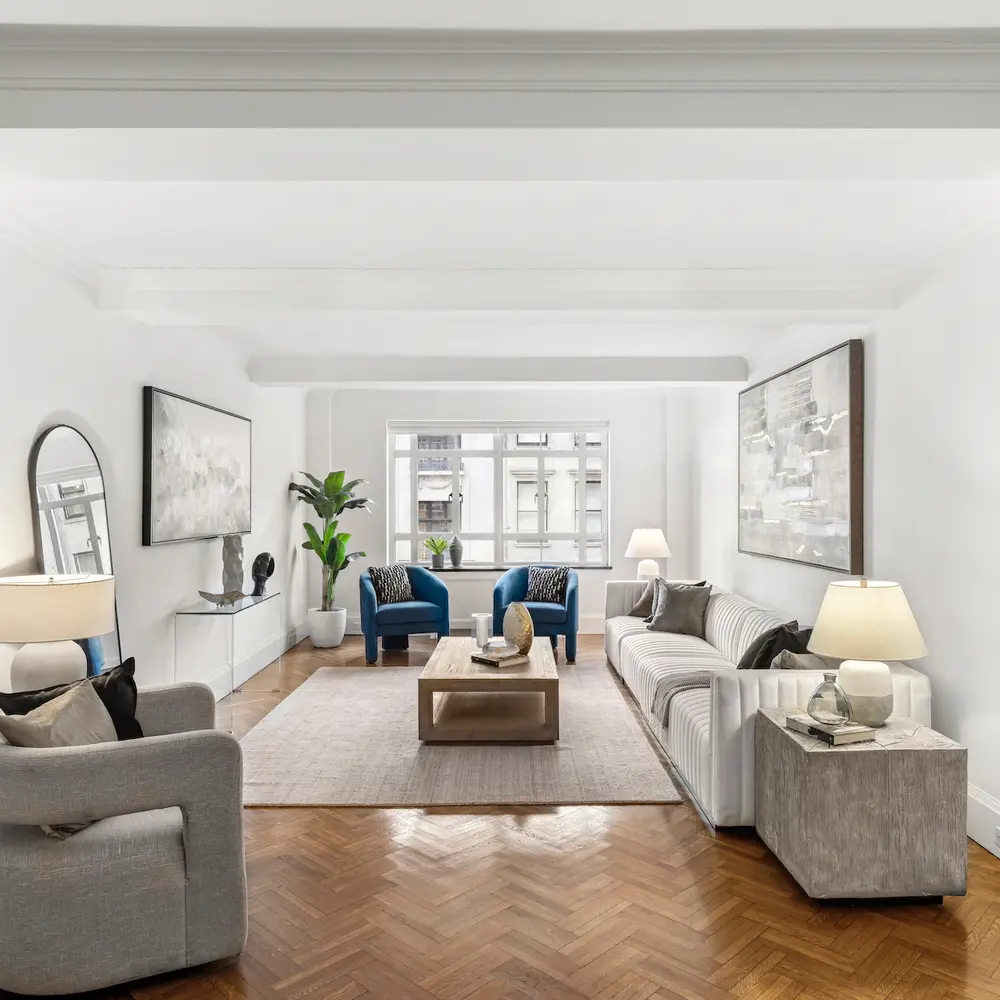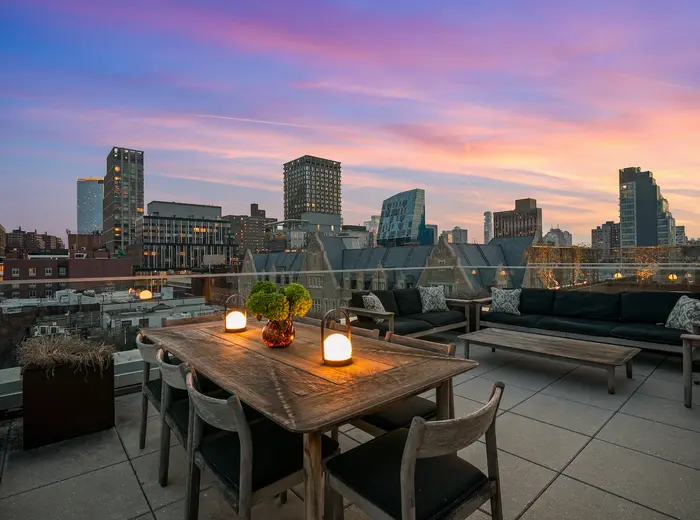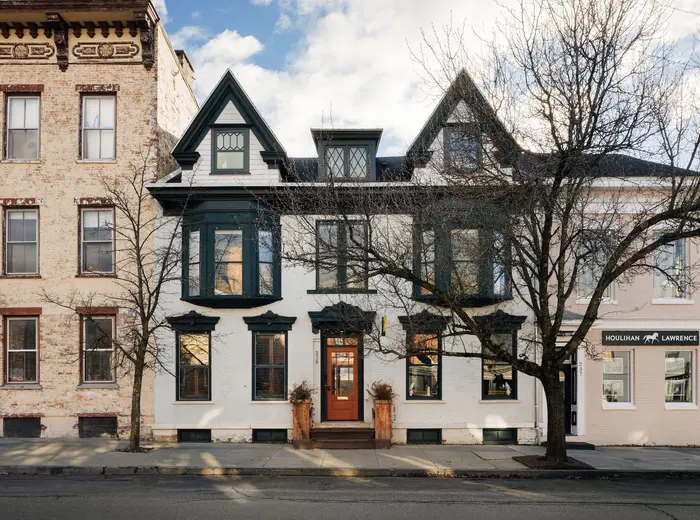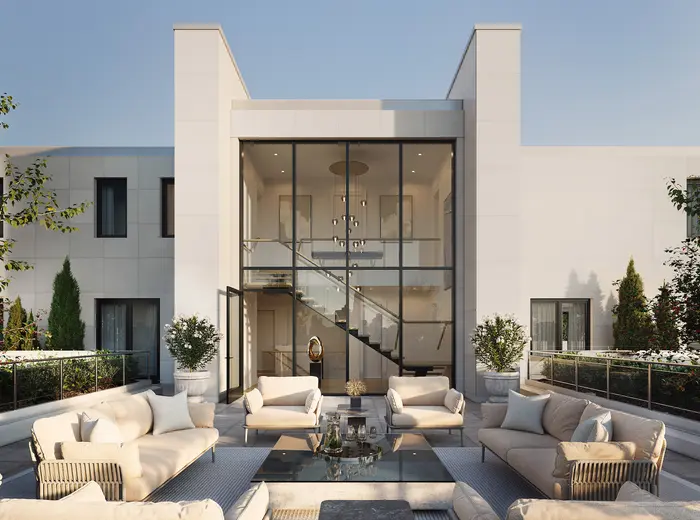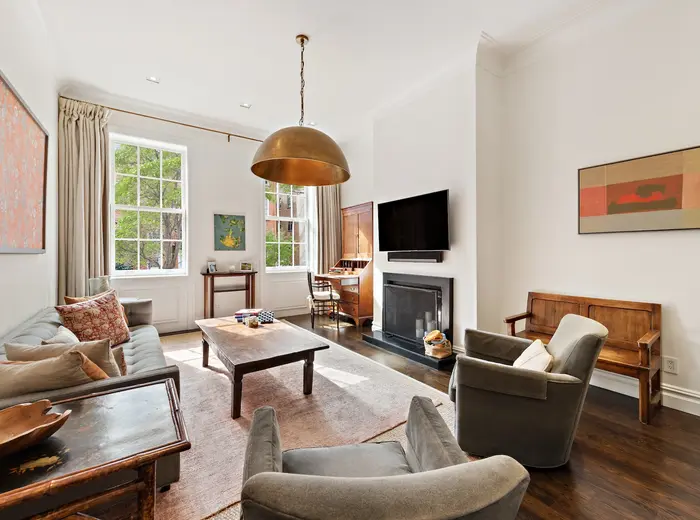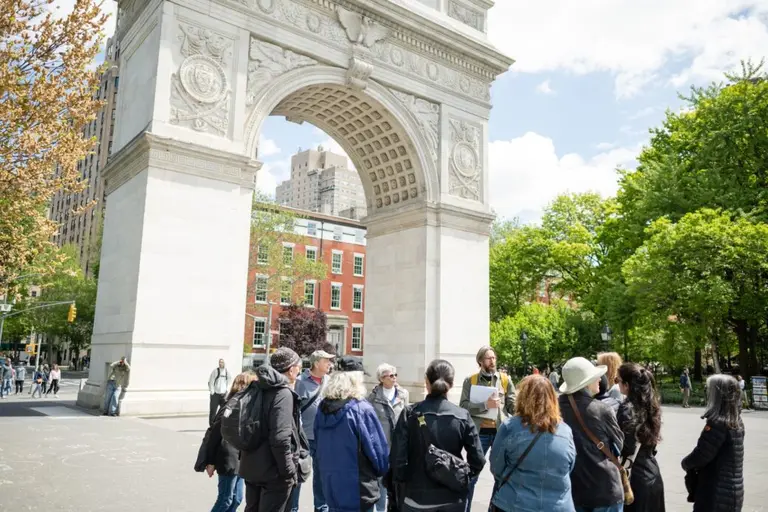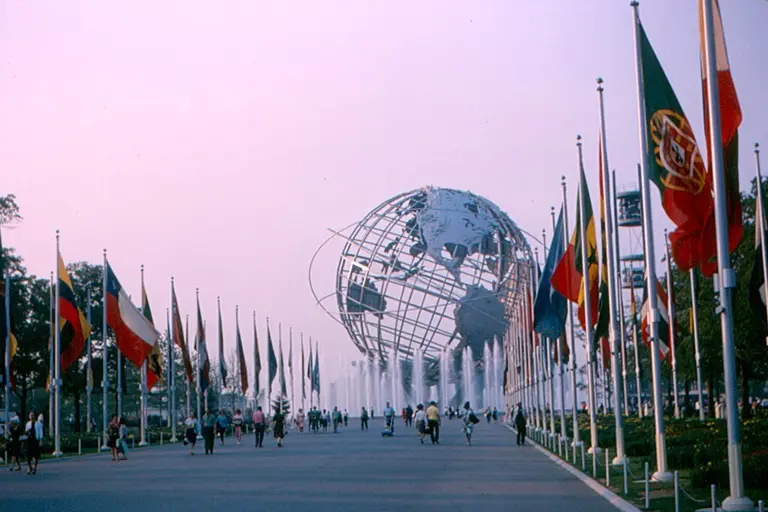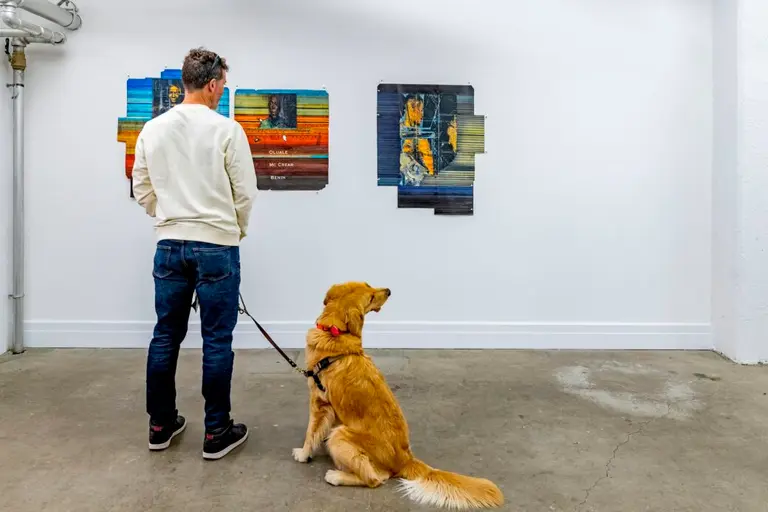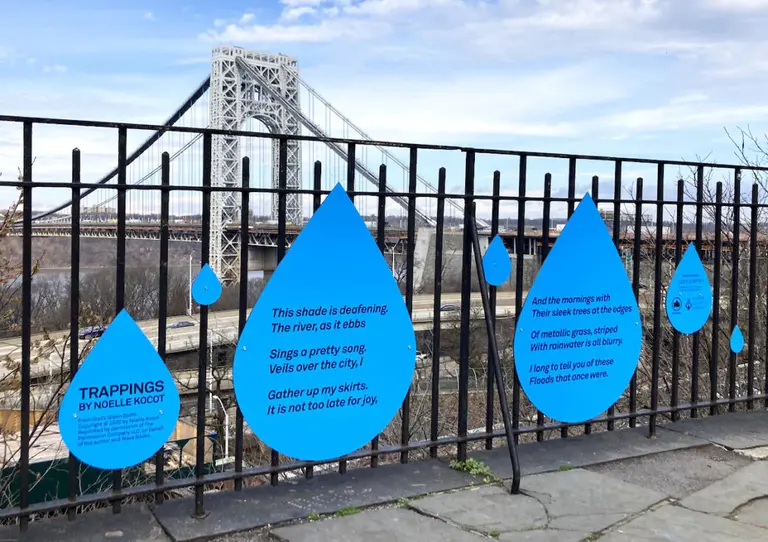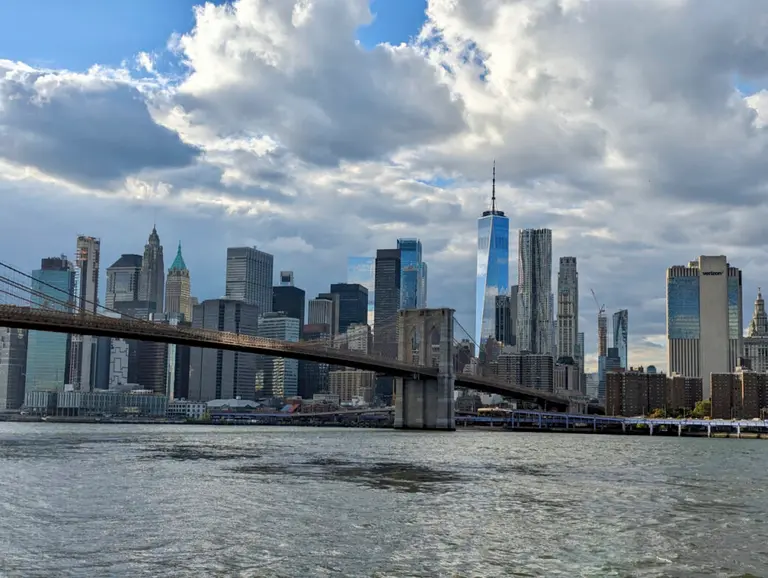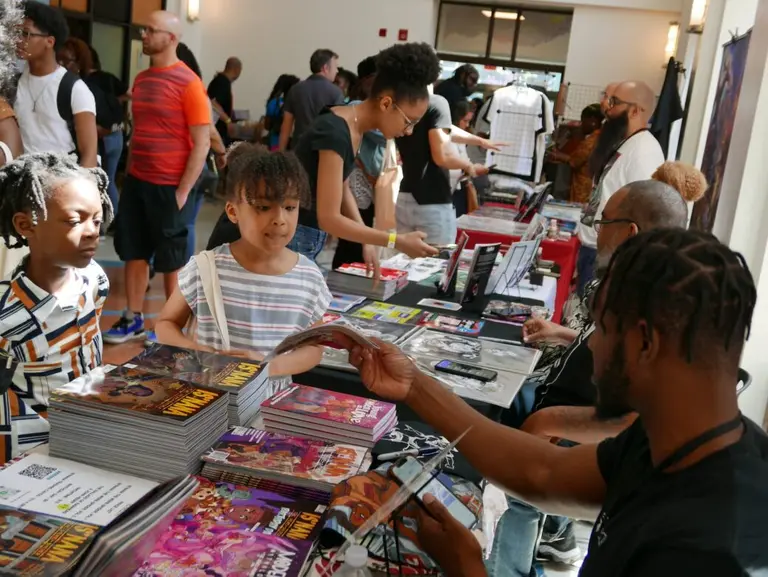How artist-activist Gwen Shockey is keeping the memories of NYC’s fading lesbian bars alive
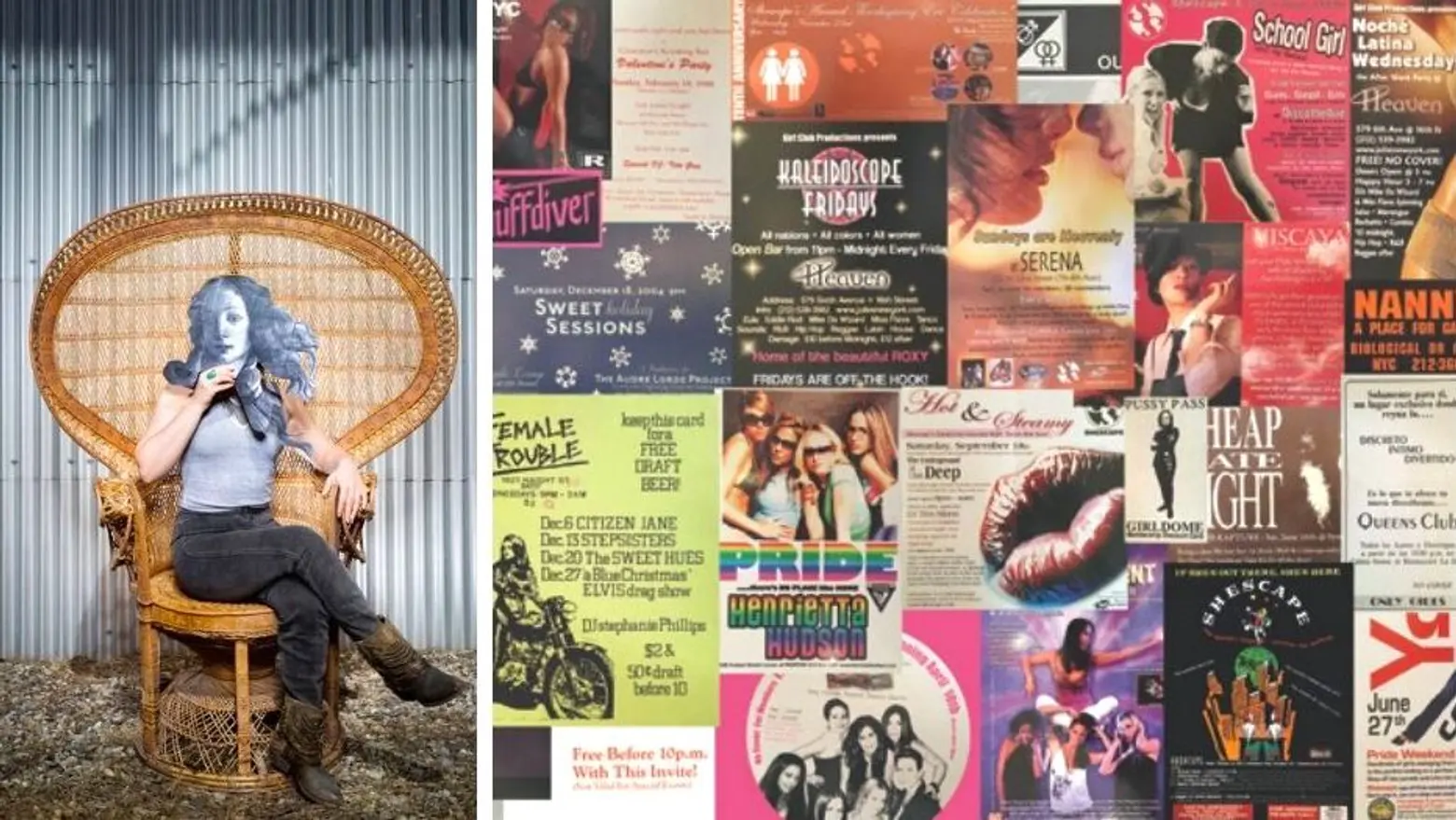
Photo of Gwen and “Girl Party Wallpaper” series, courtesy of Gwen Shockey
After 49 people were killed in a mass shooting at Pulse nightclub in Orlando in 2016, New York City artist Gwen Shockey gathered with queer people at the Cubbyhole and Stonewall Inn to mourn. The tragedy made Gwen think about the importance of lesbian bars and safe spaces for this community. She began talking with her friends, interviewing them about coming out and navigating NYC’s queer community. This laid the groundwork for Gwen’s 2017 “Addresses” project, a digital map marking more than 200 current and former queer and lesbian bars across the five boroughs. Using information from interviews she’s conducted and from police records and newspapers, Gwen found each location and photographed what sits there now.
“It felt like a secret pilgrimage, going to each location and looking for a site that was more or less invisible to everyone else around me,” she told us. And with just three lesbian bars remaining in NYC today, the need to preserve the memories of these places seems more apparent than ever. Through her project, which is ongoing, Gwen realized that although the number of lesbian bars in the city is dropping, there are “huge shifts occurring in the queer community toward inclusion not based on identity categories but based on who needs safe space now and who needs space to dance, to express their authenticity, and to be intimate.” Gwen shared with 6sqft the process of tracking the lesbian bars of NYC’s past and lessons she’s learned about the city’s LGBTQ history along the way.
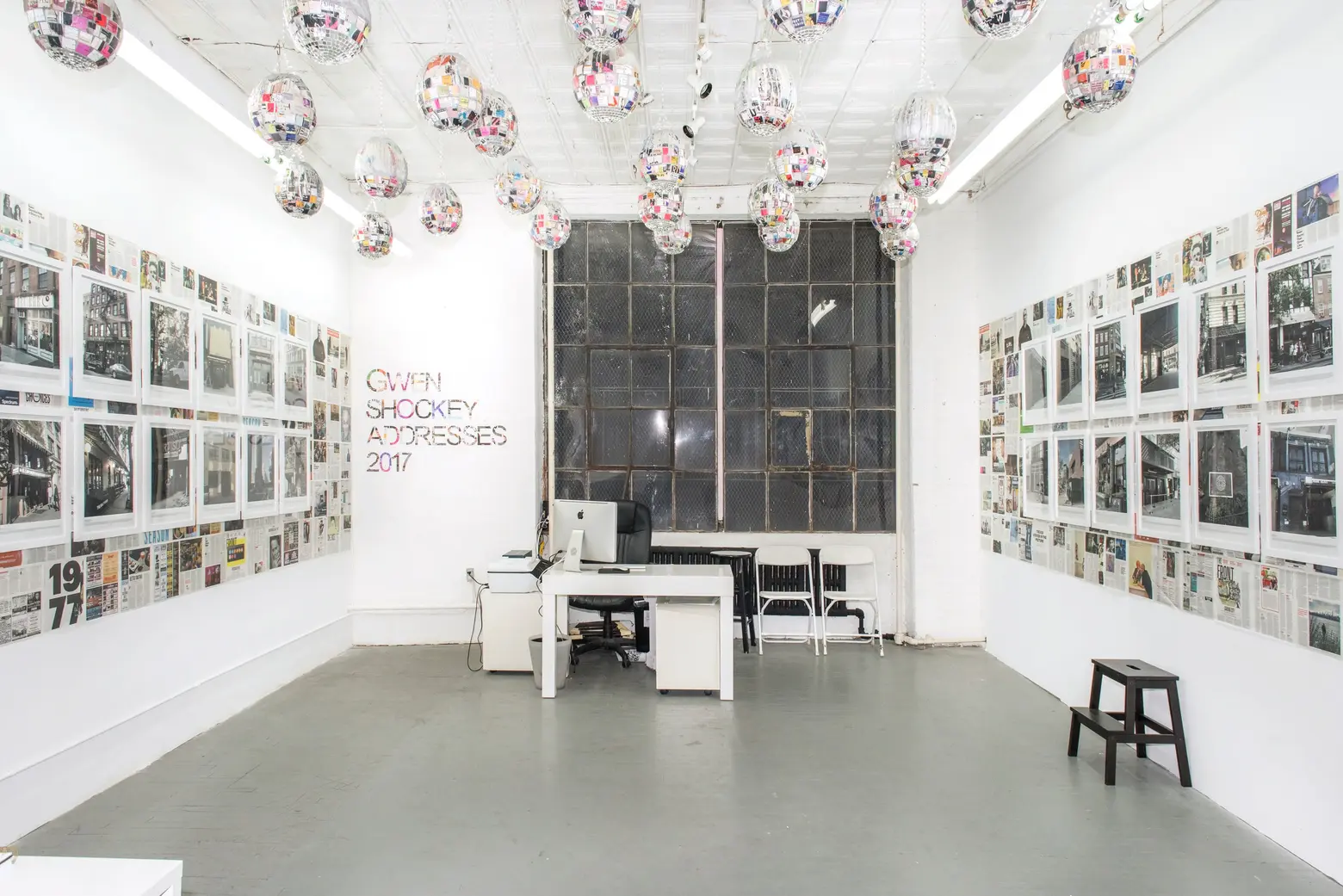
Gwen’s “Addresses” exhibition opened at the Amos Eno Gallery in the fall of 2017; Photo courtesy of Gwen Shockey
Can you tell us about yourself and your background?
I was born and raised in New Jersey. My parents are artists also and often took my sister and me into the city to museums and galleries. I have been living in New York for almost a decade. Although my art practice is interdisciplinary and spans research, writing, archiving and installation, my primary mediums are printmaking and drawing. I have been involved in LGBTQ activism for most of my life and have been exhibiting and working in the arts for the past ten or so years.
How did you come up with your “Addresses” project?
I was in graduate school at Pratt Institute when the massacre took place at Pulse nightclub in Florida and volunteering for an amazing volunteer-run LGBTQ mental health service called Identity House. I immediately went to Cubbyhole and Stonewall to mourn with other queer people and began thinking about the lesbian bars in New York that are like second homes to me.
There were four open then: Gingers in Park Slope, Cubby and Henrietta Hudson in the West Village and Bum Bum Bar in Queens which closed this year. I began interviewing friends and friends of friends about coming out, first bar experiences and making queer community in New York City. This work led to the digital map of over 200 current and former queer and lesbian bar and club locations and the oral history archive of queer and lesbian stories I am gathering.
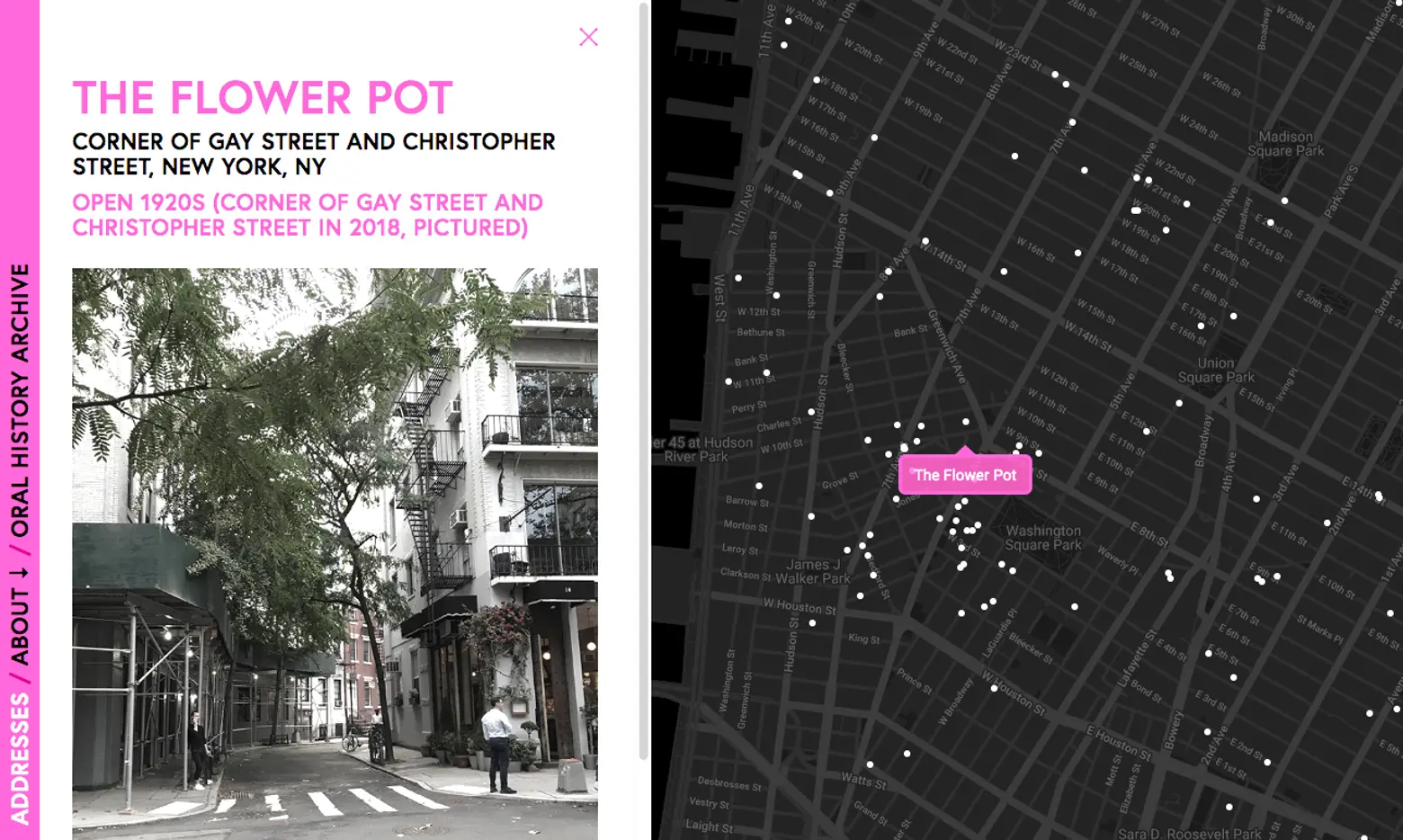
“Addresses Project” interactive map
Since a lot of the bars you mapped operated mainly underground, or have been shuttered for decades, how did you find them and what did that process look like?
Most of the information I have gathered over the years about lesbian and queer bar spaces has come from the oral history interviews I’ve conducted as well as the Lesbian Herstory Archive in Park Slope, which is an all volunteer-run collection of lesbian ephemera, literature, and objects. It is an amazing space. They have a show up right now at the New-York Historical Society alongside a show I helped work on about LGBTQ nightlife called Letting Loose and Fighting Back (up through September).
I have also found information about lesbian and queer bars and clubs in police records, non-fiction, memoirs, newspapers, magazines, blogs, business bureau records, and tax information. As you mentioned, many of these bars prior to and even through the 1970s and 1980s were controlled by the mafia. The mafia would pay police off to keep them from raiding the bars (since serving a gay person in public and dancing was illegal then and the police regularly raided and abused gay and lesbian bar patrons). The mafia used the gay and lesbian community to make money. The Gay Liberation Front actively protested the mafia’s control of the LGBTQ community in the late 1960s and 1970s.
For my addresses map, I traveled to each bar or club address that was given to me to photograph what is there now. It felt like a secret pilgrimage, going to each location and looking for a site that was more or less invisible to everyone else around me. All of these photographs are on the map and offer a view of how the city has changed (and remained the same) since these spaces were active and open.
Will “Addresses” be ongoing?
Oh yes! Not only am I nowhere near done transcribing and conducting oral histories but new queer bars and parties and clubs are opening and closing every month and I continuously find out more information about former spaces. The work is endless and endlessly exciting!
Through your research, did you learn anything new about NYC’s LGBTQ history or the city in general?
I learned so much about the intersections of the Gay Rights Movement with Civil Rights and Women’s Rights. I learned how segregated and dangerous many bars and clubs were for lesbians of color throughout the 1900s. I learned how much my lesbian and queer elders sacrificed to allow my generation and those younger than me to access basic rights and freedoms. I learned how largely corrupt the politics of this city have been throughout the 1900s and how the queer community played such a big role in fighting this corruption and uplifting minority communities across racial, income and gender-based lines.
We (queers) were and are everywhere, in every industry and our ancestors are responsible for creating and maintaining the institutions (small and large) that draw millions of people to this city to live and to visit.
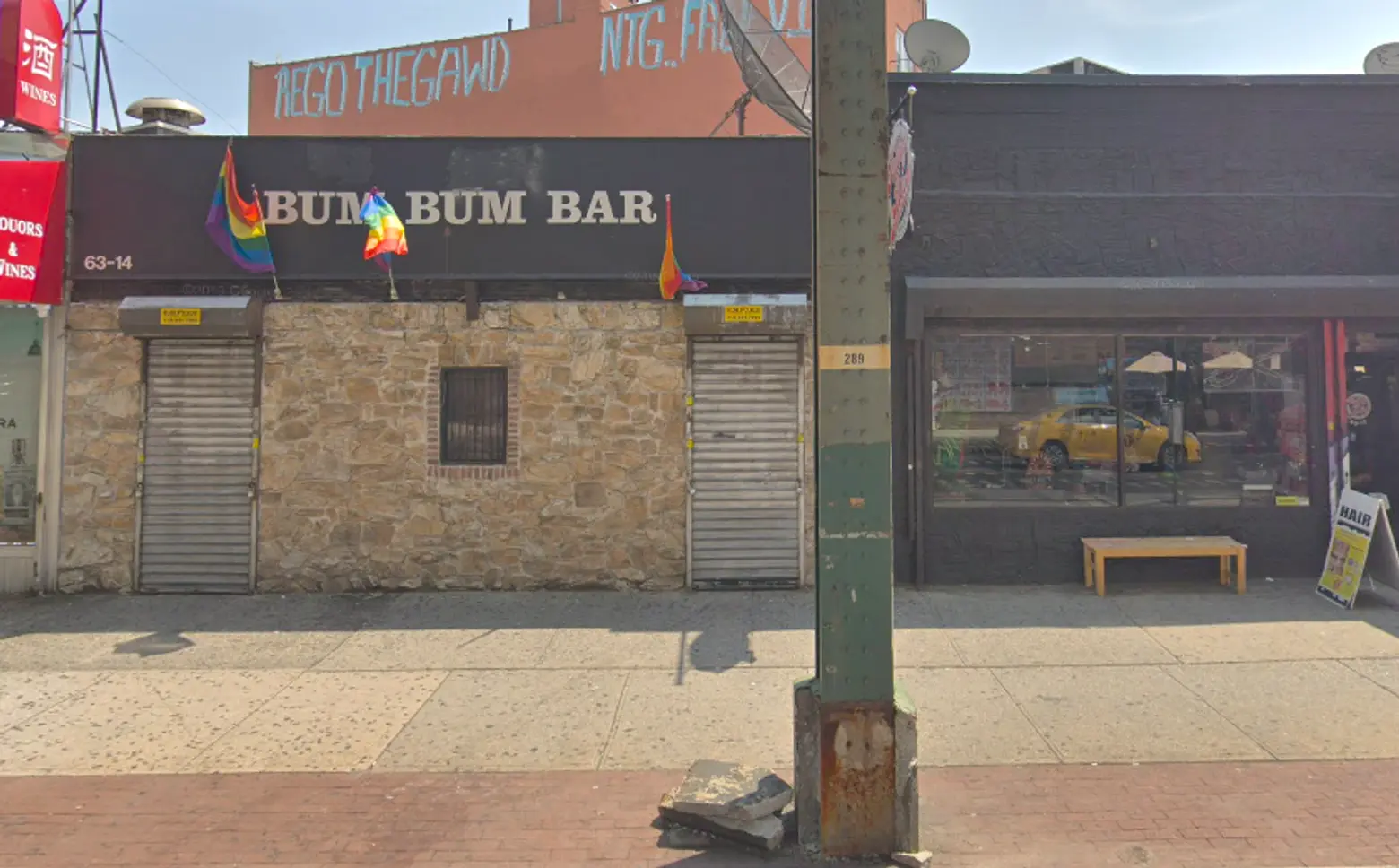
The Bum Bum Bar in Queens is the latest lesbian bar to shutter
There are now only three lesbian bars remaining in NYC. Why do you think there’s been a decline in the number of spaces in New York and other cities across the country?
This project started from a place of sadness and fear for me. Sadness for the lives lost at Pulse and the refusal to name the massacre a hate crime. Fear that something like that would happen here in a bar that I considered a second home and fear that I would lose all of the bars I loved. But these feelings have changed a lot for me. Everyone is focusing on the loss of lesbian bars but not on the huge shifts occurring in the queer community towards inclusion not based on identity categories but based on who needs safe space now and who needs space to dance, to express their authenticity and to be intimate. It IS harder to open 7-days-a-week businesses in this city now.
Despite the impossibility of NYC’s real-estate market and the continual income disparity between men and women, new parties and bars continue to pop up. No Bar just opened in the Standard Hotel East for instance and more and more monthly and bi-weekly events and parties are happening, marketing themselves specifically to queer people of color or lesbian and femme-identified individuals or the queer BDSM community, etc.
Unless we completely assimilate into the heteronormative culture and as long as there are queers, there will be queer parties and bars. I must say though if Cubbyhole, Gingers or Henrietta were to close I would be heartbroken. Those spaces not only serve and protect (pun intended!) generations of younger lesbians and queers but our history and our elders. They should be landmarks.
Do you have any advice for LGBTQ artists in NYC?
I’ve been seeing a graffiti tag lately that says “The Rich Killed NYC.” I love this. Artists are getting pushed out as wealthy families and individuals buy out the neighborhoods and replace unique shops and restaurants with chains. It is sad and scary. Studio space is unaffordable and apartments are unaffordable. I’m not sure what advice I would give… be active, vocal and collaborative! Protest laws that make housing unaffordable and vote for government officials who recognize that the arts are the lifeblood of this city.
Any upcoming projects or exhibitions we should know about?
I have a solo exhibition opening on June 7 at Practice Gallery in Philly called Venus Rising. It will be up through World Pride on June 30. And be sure to check out the exhibitions at the New-York Historical Society on LGBTQ nightlife and lesbian history.
RELATED:
